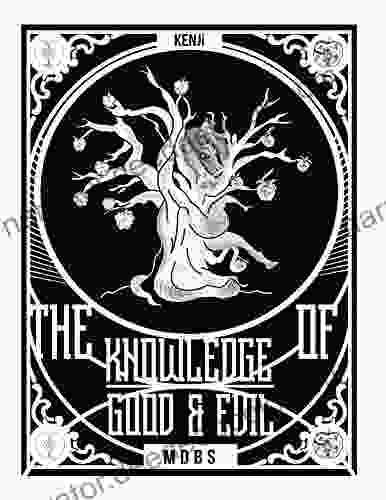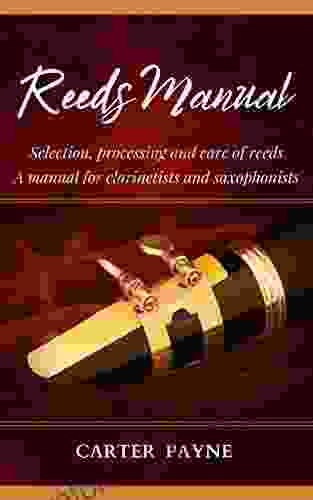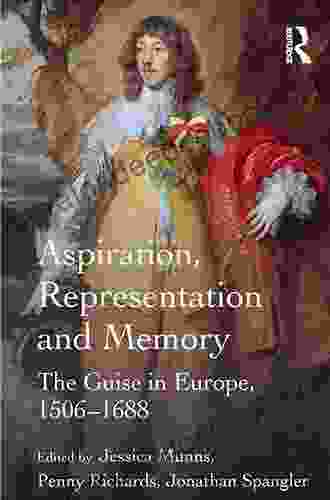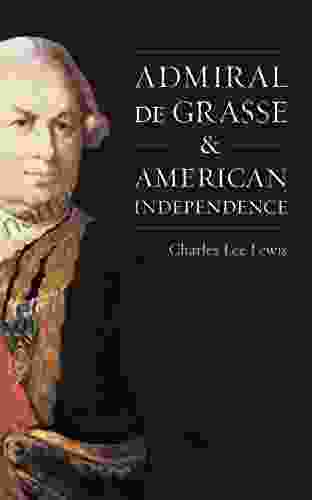Aspiration, Representation, and Memory: The Guise in Europe, 1506-1688

The Guise family was one of the most powerful and influential in Europe during the 16th and 17th centuries. They played a major role in the French Wars of Religion and the Thirty Years' War, and their ambitions and aspirations helped to shape the course of European history.
5 out of 5
| Language | : | English |
| File size | : | 7844 KB |
| Text-to-Speech | : | Enabled |
| Screen Reader | : | Supported |
| Enhanced typesetting | : | Enabled |
| Print length | : | 225 pages |
The Guise were a cadet branch of the House of Lorraine, one of the oldest and most illustrious noble families in France. The family's fortunes began to rise in the early 16th century, when Claude de Lorraine, Duke of Guise, became a close advisor to King Francis I. Claude's son, Francis, Duke of Guise, was a brilliant military commander who played a leading role in the French Wars of Religion. Francis's brother, Charles, Cardinal of Lorraine, was a skilled diplomat and politician who served as the chief minister of France during the reign of Francis II.
The Guise were staunch Catholics, and they played a major role in the French Wars of Religion, which pitted the Catholic majority against the Protestant minority. The Guise were determined to crush Protestantism in France, and they were willing to use any means necessary to achieve their goals. They were responsible for the St. Bartholomew's Day Massacre in 1572, in which thousands of Protestants were killed. The Guise's actions helped to prolong the wars of religion for decades, and they contributed to the deep divisions that plagued French society.
In addition to their military and political power, the Guise were also major patrons of the arts. They commissioned works of art from some of the most famous artists of the day, including Titian, Michelangelo, and El Greco. The Guise's patronage of the arts helped to create a rich and vibrant artistic culture in France. It also helped to promote the Guise's image as cultured and sophisticated patrons of the arts.
The Guise were also skilled propagandists. They used art, literature, and other forms of media to promote their image and to advance their political agenda. The Guise commissioned portraits that depicted them as heroic and virtuous leaders. They also published pamphlets and books that extolled their virtues and accomplishments. The Guise's propaganda was effective, and it helped to create a positive image of the family in the eyes of the public.
The Guise's power and influence reached its peak in the late 16th century. However, their fortunes began to decline after the assassination of Henry III in 1589. The Guise were suspected of being involved in the assassination, and they were forced to flee France. The Guise eventually returned to France, but they were never able to regain their former power. The family's influence continued to decline throughout the 17th century, and they eventually faded into obscurity.
The Guise family was a complex and fascinating one. They were ambitious, ruthless, and powerful, and they played a major role in the history of Europe. The Guise's representation in art and literature is a valuable source of information about their aspirations, their achievements, and their ultimate downfall.
The Guise in Art
The Guise were major patrons of the arts, and they commissioned works of art from some of the most famous artists of the day. These works of art provide a valuable insight into the Guise's image and their aspirations. The Guise were often portrayed as heroic and virtuous leaders, and they were frequently depicted in classical or biblical scenes.
One of the most famous portraits of the Guise is Titian's "Portrait of Francis, Duke of Guise" (c. 1553). The portrait depicts Francis in a heroic pose, wearing a suit of armor and holding a sword. The portrait is a testament to Francis's military prowess and his status as a leading figure in the French Wars of Religion.
Another famous portrait of the Guise is El Greco's "Portrait of Charles, Cardinal of Lorraine" (c. 1580). The portrait depicts Charles in a more somber pose, wearing a cardinal's robes. The portrait is a testament to Charles's intelligence and his role as a leading figure in the Catholic Church.
The Guise also commissioned works of art that depicted them in classical or biblical scenes. These works of art were intended to show the Guise as the heirs of the great heroes and leaders of antiquity. One example is the "Guise Tapestry" (c. 1550),which depicts the Guise as the heroes of the Trojan War. The tapestry is a testament to the Guise's desire to be seen as the leaders of a new golden age for France.
The Guise in Literature
The Guise were also the subject of numerous works of literature. These works of literature provide a valuable insight into the Guise's public image and their role in the history of France. The Guise were often depicted as heroic and virtuous leaders, but they were also criticized for their ambition and ruthlessness.
One of the most famous works of literature about the Guise is Pierre de Ronsard's "Ode to the Guise" (1550). The ode praises the Guise for their military victories and their defense of the Catholic faith. Ronsard's ode is a testament to the Guise's popularity among the French people.
Another famous work of literature about the Guise is Agrippa d'Aubigné's "The History of the Great Wars of Religion" (1616-1620). D'Aubigné's history is a critical account of the French Wars of Religion, and it provides a detailed account of the Guise's role in the wars. D'Aubigné's history is a valuable source of information about the Guise and their impact on French history.
The Guise in Memory
The Guise family left a lasting legacy on French history. They were major figures in the French Wars of Religion and the Thirty Years' War, and they played a key role in shaping the course of European history. The Guise's representation in art and literature is a valuable source of information about their aspirations, their achievements, and their ultimate downfall. The Guise are a reminder of the power and influence of the nobility in early modern Europe, and they continue to fascinate historians and the general public alike.
5 out of 5
| Language | : | English |
| File size | : | 7844 KB |
| Text-to-Speech | : | Enabled |
| Screen Reader | : | Supported |
| Enhanced typesetting | : | Enabled |
| Print length | : | 225 pages |
Do you want to contribute by writing guest posts on this blog?
Please contact us and send us a resume of previous articles that you have written.
 Novel
Novel Page
Page Text
Text Genre
Genre Paperback
Paperback E-book
E-book Magazine
Magazine Shelf
Shelf Glossary
Glossary Foreword
Foreword Annotation
Annotation Manuscript
Manuscript Codex
Codex Tome
Tome Library card
Library card Autobiography
Autobiography Reference
Reference Encyclopedia
Encyclopedia Dictionary
Dictionary Thesaurus
Thesaurus Narrator
Narrator Character
Character Resolution
Resolution Librarian
Librarian Borrowing
Borrowing Study
Study Research
Research Lending
Lending Academic
Academic Journals
Journals Reading Room
Reading Room Rare Books
Rare Books Special Collections
Special Collections Interlibrary
Interlibrary Literacy
Literacy Study Group
Study Group Dissertation
Dissertation Reading List
Reading List Theory
Theory Textbooks
Textbooks Sophie Jackson
Sophie Jackson D S Jones
D S Jones Laura Gray
Laura Gray Alex Capshaw Taylor
Alex Capshaw Taylor Alejandria Kate
Alejandria Kate Amy Cross
Amy Cross Louanne Johnson
Louanne Johnson Aleksei Bitskoff
Aleksei Bitskoff Poetry Of Dhiman
Poetry Of Dhiman Will Leitch
Will Leitch Jackie French
Jackie French Rose Kent
Rose Kent Rue Du Chat
Rue Du Chat Laura Marshall
Laura Marshall Jennifer A Delton
Jennifer A Delton Renata Ramos
Renata Ramos Alex Campbell
Alex Campbell Victor Hugo
Victor Hugo Judith Loske
Judith Loske Camille Baker
Camille Baker
Light bulbAdvertise smarter! Our strategic ad space ensures maximum exposure. Reserve your spot today!

 Bryce FosterThe Picture of Dorian Gray Illustrated: Exploring the Dark Allure of Beauty...
Bryce FosterThe Picture of Dorian Gray Illustrated: Exploring the Dark Allure of Beauty...
 Victor HugoThe Knowledge of Good and Evil: Unveiling the Complexities of Human Nature in...
Victor HugoThe Knowledge of Good and Evil: Unveiling the Complexities of Human Nature in... Allen GinsbergFollow ·9.5k
Allen GinsbergFollow ·9.5k Marc FosterFollow ·4.7k
Marc FosterFollow ·4.7k Ross NelsonFollow ·8.3k
Ross NelsonFollow ·8.3k Branson CarterFollow ·18k
Branson CarterFollow ·18k Tom HayesFollow ·9.4k
Tom HayesFollow ·9.4k Ibrahim BlairFollow ·10k
Ibrahim BlairFollow ·10k Josh CarterFollow ·13.6k
Josh CarterFollow ·13.6k Hugo CoxFollow ·13.4k
Hugo CoxFollow ·13.4k

 Abe Mitchell
Abe MitchellUnveiling the Urban Cheating Rich System: A Comprehensive...
In today's complex and ever-evolving urban...

 Preston Simmons
Preston SimmonsSelection, Processing, and Care of Reeds: A Comprehensive...
Reeds are essential...

 Rob Foster
Rob FosterKeeper of the Grail: The Youngest Templar
Prologue: A Sacred...
5 out of 5
| Language | : | English |
| File size | : | 7844 KB |
| Text-to-Speech | : | Enabled |
| Screen Reader | : | Supported |
| Enhanced typesetting | : | Enabled |
| Print length | : | 225 pages |














